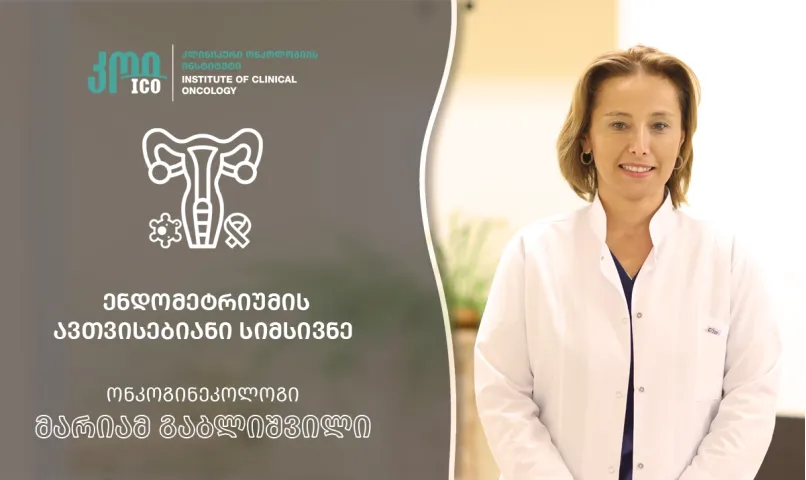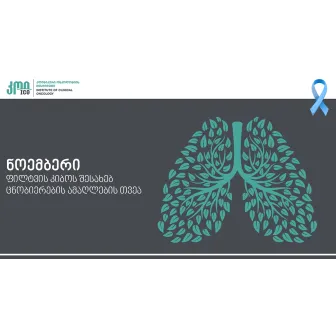Endometrial carcinoma
Endometrial cancer is one of the most common cancers in developed countries, and its incidence is increasing worldwide, with the number of cases increasing in recent years, especially in older women and alongside the increase in obesity. It is most common in postmenopausal women (after 60 years of age), although it can also occur in younger women.
Risk factors:
Hormonal imbalance - endogenous hyperestrogenia - in polycystic ovary syndrome or obesity, exogenous uncontrolled estrogen therapy
- Long-term tamoxifen treatment
- Obesity - BMI>30
- Infertility
- Late menopause
- Metabolic syndrome
- Genetic factors -LYNCH syndrome – high risk for endometrium and colorectal cancer, family history
Clinical manifestation:
Pathological amenorrhea in premenopause
- Bloody discharge and excessive vagila bleeding in premenopause
- Pelvic pain
- Urination and defecation problems
- General weakness
- Anemia
Classification of endometrial carcinoma relies on both morphological and molecular features. Recently, molecular diagnostics have gained significant clinical importance for treatment personalization.
Histological classification:
Endometrioid adenocarcinoma – the most common type (80-90%) - is associated with endometrial hyperplasia, anovulation, and metabolic syndrome
Serous carcinoma - With a relatively aggressive clinical course (10%) - non-hormonal, develops on atrophic endometrium
Clear cell adenocarcinoma – rare (1-5%), characterized by aggressive mediastinitis, and is not associated with estrogenic stimulation.
Carcinosarkoma - mixed form - characterized by high aggressiveness and ability to metastasize
Undifferentiated carcinoma - an aggressive form, characterized by resistance to treatment.
According to the Cancer Genome Atlas (TCGA) project, endometrial cancer is classified into four molecular groups that better define prognosis and potential treatments.
POLE-ultramutated
MSI-H (Microsatellite Instability – Hypermutated)
Copy-number low / NSMP (No Specific Molecular Profile)
Copy-number high / p53-abnormal (Serous-like)
Correlation Between Morphological and Molecular Types:
Morphological and molecular type (often associated)
|
Endometrial |
POLE-mutated, MSI-H, NSMP |
|
Serous |
p53-abnormal |
|
Clear cell |
p53-abnormal or NSMP |
|
Carcinosarkoma |
often p53-abnormal |
|
Undifferentiated |
p53-abnormal or POLE/MSI rarely |
Diagnostics:
- Transvaginal ultrasound
- Assessment of endometrium thickness
- In menopause: >5 mm is considered suspicious
- Endometrial biopsy/Curettage
- Office hysteroscopy
- Morphological confirmation of a diagnosis is necessary
- Visual inspection with hysteroscopy and targeted biopsy
Staging (FIGO system)
- MRI - Local dissemination and evaluation of lymph nodes
- CT - Exclusion of disease dissemination and advanced metastasis
- CA-125 - Sometimes evaluated in serious type cases or suspected metastasis
Surgical treatment
- Hysterectomy + bilateral salpingo-oophorectomy
- Pelvic/para-aortic lymphadenectomy (for staging and prognosis)
Adjuvant treatment (by stage and type):
|
Stage/type |
Recommended treatment |
|
Stage IA, Grade 1–2 |
only surgery (often without adjuvant treatment) |
|
Stage IB or Grade 3 |
Vaginal brachytherapy or external beam radiation |
|
Stage II or more |
Radiotherapy + chemotherapy |
|
Serous/clear cell type |
Surgery + Chemotherapy ± Radiotherapy |
|
POLE-mutation |
Often, adjuvant treatment is not required (good prognosis) |
|
p53-abnormal |
Requires intensive therapy |
Chemotherapy
- Platinum and Taxane combination (Carboplatin + Paclitaxel)
- Used for high-risk, metastatic, or recurrent cases
Hormonotherapy:
- Applied for:
- Low-grade endometrial carcinoma
- Young women trying to preserve fertility
- Medicines:
- Progestins (Megestrol acetate, Medroxyprogesterone acetate)
- IUD (Mirena)
Immunotherapy and targeted therapy
- For MSI-H or dMMR types:
- PD-1 inhibitors (Pembrolizumab, Dostarlimab)
- HER2-positive serous carcinoma:
- Trastuzumab + Chemotherapy
The prognosis of the clinical course of endometrial carcinoma depends on the stage, histological, and molecular type of the disease.
|
Stage |
5-year survival rate |
|
IA |
~90–95% |
|
IB |
~80–90% |
|
II |
~70–80% |
|
III |
~50–60% |
|
IV |
<20% |
- POLE- ultramutated – the best prognosis
- p53-abnormal / serous type - poor prognosis and high rate of recurrence
- Laboratory diagnosis and prevention of prediabetes and diabetes
What is prediabetes?
Prediabetes is a condition in which the blood glucose level is higher than normal, but not high enough to be diagnosed as diabetes. How is prediabetes diagnosed?
The three main laboratory tests that help diagnose prediabetes are:
- Determination of blood glucose after 8-12 hours of fasting. If the fasting glucose level is higher than 100 mg/dl, it indicates a prediabetic state.
- Glucose tolerance test - when glucose is tested two hours after a 75 mg glucose load. In prediabetes, the glucose level ranges from 140 to 199.
- A glycohemoglobin test, which measures the average amount of glucose in the blood over the past three months. In prediabetes, the glucose level exceeds 5.6%.
An increase in one of these tests already indicates a prediabetic state. It is necessary to repeat the test to make a final diagnosis.
What is diabetes?
Diabetes is a chronic metabolic disorder in which the body's ability to process glucose is impaired, leading to elevated blood sugar levels. This condition is called hyperglycemia. Over time, persistently high blood sugar can damage various organs and body systems.
How many types of diabetes are there, and what are the main differences between them?
There are two main types of diabetes: type 1 diabetes and type 2 diabetes. There is also the third type, known as gestational diabetes, which mostly occurs in pregnant women and which later increases the risk of developing diabetes.
When does type 1 diabetes occur, and what is a cause of its occurrence?
Type 1 diabetes is an autoimmune disease in which the body's own immune system destroys the beta cells of the pancreas, preventing the body from producing insulin, which is necessary for glucose to be absorbed by cells. Type 1 diabetes usually occurs in childhood, but it can also occur in adults.
How do we diagnose diabetes?
Diabetes is diagnosed when the fasting blood glucose level exceeds 126 mg/dl. Which laboratory indicators assist in diagnosing type 1? Besides glucose, immunological tests for autoantibodies that inhibit insulin production are necessary for diagnosing type 1. Additionally, differential diagnosis includes analyzing C-peptide (endogenous insulin) in the blood; a low level indicates type 1 diabetes, while normal or high levels suggest type 2.
What is type 2 diabetes, and when does it develop?
Type 2 diabetes, unlike type 1, develops later (40+). The cause of its development is insufficient insulin production or its ineffectiveness, also known as insulin resistance. For diagnosis, we monitor the results of the following indicators in the blood:
1. Fasting clusocce
2. Glucose tolerance test
3. Determination of Glycohemoglobin
If any or all of these three are elevated, diabetes should be suspected. The test must be repeated over several days. To identify the type of diabetes, a C-peptide test should be conducted. In cases of suspected type 2 diabetes, it is necessary to calculate the HOMA (Homeostatic Model Assessment for Insulin Resistance) index in the blood, which helps evaluate insulin resistance, or how well insulin performs its function in the body.
How to prevent diabetes?
To prevent diabetes, especially type 2, it is necessary to follow the following small, yet important lifestyle rules every day:
1. Diet - limit foods with a low glycemic index, such as vegetables, legumes, grains, nuts, and berries, and avoid sugary drinks and baked goods.
2. Physical activity (such as physical exams, walking, swimming, and dancing) improves cell sensitivity to insulin.
3. Weight control – even a 5–10% weight loss greatly lowers the risk of diabetes in prediabetes and insulin resistance cases
4. Stress management – chronic stress increases cortisol levels, which interferes with the effectiveness of insulin.
5. Get adequate sleep (7-9 hr.) – lack of sleep increases the resistance of cells to glucose.
6. Regular screening: If you have risk factors such as family history, being overweight, or previous gestational diabetes, it is necessary to regularly test glucose, insulin, and HOMA-IR.
- Views:1202

















